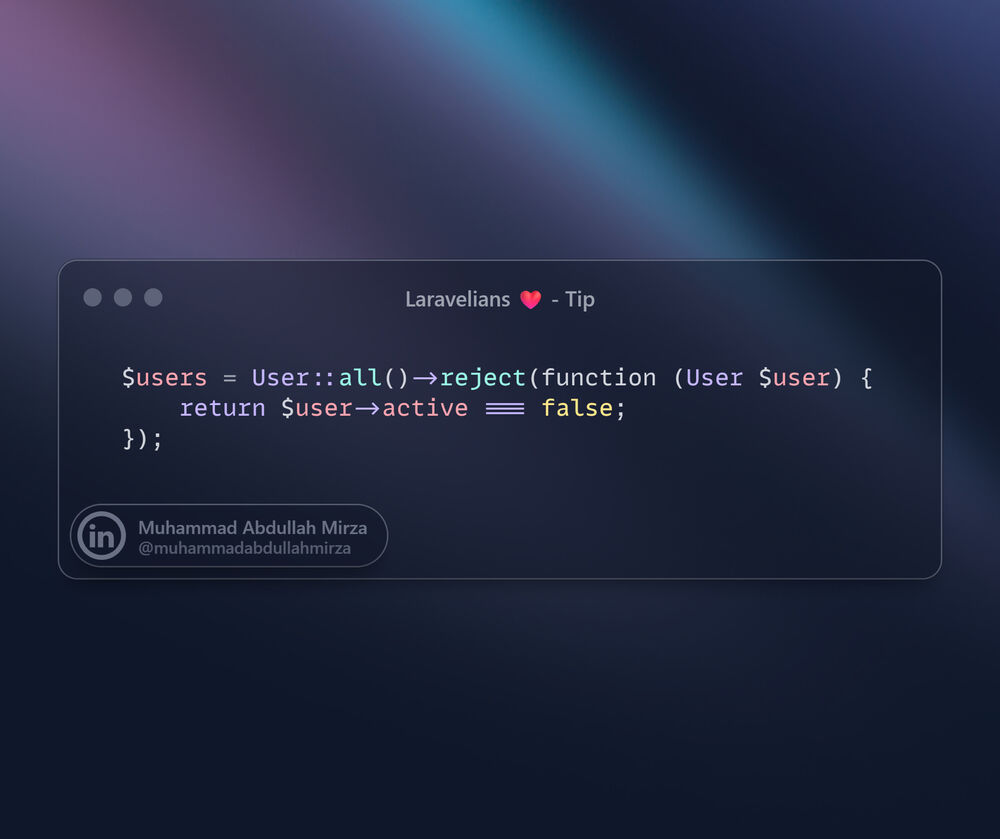
𝗧𝗶𝗽 𝗼𝗳 𝗧𝗵𝗲 𝗗𝗮𝘆 𝗳𝗼𝗿 𝗟𝗮𝗿𝗮𝘃𝗲𝗹𝗶𝗮𝗻𝘀❤️
Laravel is amazing when it comes to simplifying data filtering and collection manipulation. Let's dive into an incredibly handy feature Laravel provides with collection methods! 🚀💪
𝟏. 𝐖𝐡𝐚𝐭 𝐢𝐬 𝐇𝐚𝐩𝐩𝐞𝐧𝐢𝐧𝐠?
𝗿𝗲𝗷𝗲𝗰𝘁(): Quickly excludes all items that match certain conditions.
𝟐. 𝐔𝐬𝐞 𝐂𝐚𝐬𝐞
Imagine you want to manage a user list displaying only active members in your application dashboard. Using collection methods like 𝗿𝗲𝗷𝗲𝗰𝘁(), you can easily clean up your data without cluttering your codebase with loops or complex conditions.
Clean code, clearer logic!
#CodeTips
#Laravelians
#Laravel
#CleanCode
#WebDevelopment
#PHP
#BestPractices
This particular example would be better done as part of the query to avoid loading and hydrating every user in the database before filtering it down.
But there are definitely lots of use cases for collection methods that can't effectively be done as part of the query.
Yup! it's actually for those use-case. User::all() is just used for example.
Good tip! Just worth noting that this example is most effective when 'active' is a computed attribute rather than a database column.
If it's a DB column, using reject() would load the entire unfiltered collection first, which is less efficient than a simple User::where('active', true)->get().
Collection methods like reject() are really amazing when dealing with calculated attributes or complex logic that can't be easily translated to SQL.
Balancing Collection methods and Eloquent could be tricky.



